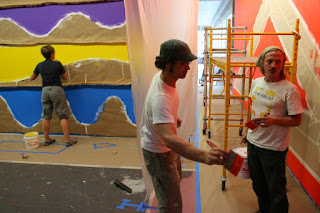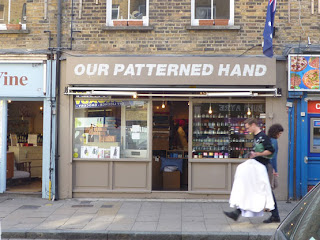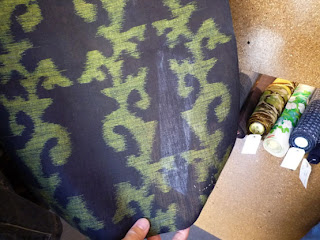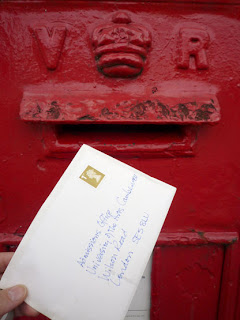
 For a video of the installation process, click here. (And in this video LeWitt's installer, Anthony, talks about the formula, rationale, and collaboration behind the installation of one of the wall drawings made from pencil lines - the instructions are "all written in the title".)
For a video of the installation process, click here. (And in this video LeWitt's installer, Anthony, talks about the formula, rationale, and collaboration behind the installation of one of the wall drawings made from pencil lines - the instructions are "all written in the title".)Here's a view of some of the final installation -
 "In the early 1980s Sol LeWitt began to use India ink and colored ink washes, which are applied to walls with soft rags – a technique that creates jewel-tone colors and gives the works a fresco-like quality. LeWitt frequently applied the same systems to this new medium that he had used when working with pencil. He assigned gray, yellow, red, and blue ink washes to stand in for the four basic types of line; gray ink wash took the place of vertical lines, yellow replaced horizontal, red replaced diagonal left to right lines, and blue was used for diagonal right to left. "
"In the early 1980s Sol LeWitt began to use India ink and colored ink washes, which are applied to walls with soft rags – a technique that creates jewel-tone colors and gives the works a fresco-like quality. LeWitt frequently applied the same systems to this new medium that he had used when working with pencil. He assigned gray, yellow, red, and blue ink washes to stand in for the four basic types of line; gray ink wash took the place of vertical lines, yellow replaced horizontal, red replaced diagonal left to right lines, and blue was used for diagonal right to left. "
















































